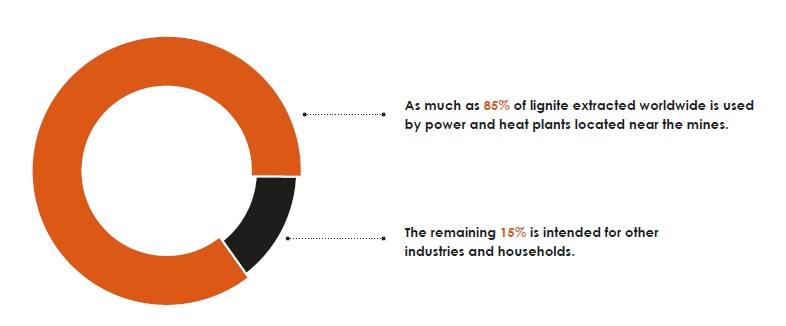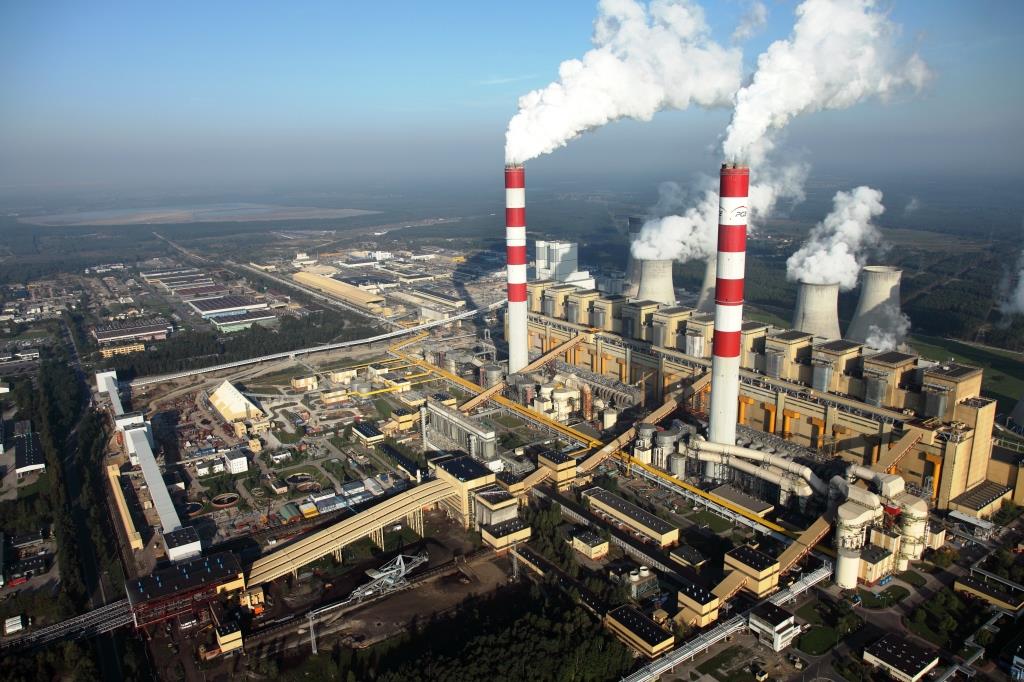Considering currently available applications of economic viability, the main types of lignite include:
- energetic lignite – used in thermal power plants; energy and ash contents over 6.5 MJ/kg and less than 40%, respectively;
- briquette lignite – for production of briquetted lignite; energy and ash contents over 8.4 MJ/kg and less than 15%, respectively;
- lignite for carbonization – for primary tar and liquid fuel production, dry lignite contains less than 20% ash;
- lignite for extraction – used for extraction of wax and bitumen, contains over 12 DM% bitumen.
Lignite is used in Poland almost exclusively for energy production, mostly power but also of heat.

Lignite is extracted in four regions of Poland: Bełchatów, Turoszów, Konin-Adamów and Lubuski regions. There are five lignite-fired power plants: Konin, Adamów, Pątnów, Turów and Bełchatów with a combined installed capacity of 9,430.8 MW as of 2015, which represented approx. 25% of the total power generation capacity in Poland. Bełchatów is Poland’s largest lignite-fired power plant with a capacity of 5,440 MW. All lignite-fired power plants produced 54,212 GWh of energy in 2014 and accounted for 34.6% of electricity generated in Poland.
As lignite transport is problematic and consequently inefficient, it is most often burned near the mines. When transported by railway lignite tends to form compact aggregates that are difficult to handle. Moreover, it often freezes in winter. Therefore, lignite-fired power plants are built in the proximity of the deposits and fed using belt conveyors. However, some power plants – for example those of Konin and Adamów – use in-house rail transport for lignite delivery.

Power plant - Bełchatów
Lignite-fired power plants consume 98.7% of all lignite extracted in Poland. The balance of 1.3% goes to individual consumers who use it mainly in home heating installations.
As of 2012, the share of lignite in power generation amounted to approx. 2% in the US, about 25% in Germany and as much as 53% in Greece.
Lignite uses other than energy generation are nowadays of minor importance. Nonetheless, lignite is a potentially valuable raw material for the chemical industry (including, but not limited to, production of semi-coke, low-temperature tar, industrial gas or Montan wax). Lignite gasification is another opportunity: process products can be used for production of liquid and gas fuels, as well as of other chemicals (e.g. ammonium sulphate, ammonia, creosol acid, xenon gas, krypton gas, liquid nitrogen, phenols, etc.).
Pulverized coal generated at lignite processing and handling can be used as a raw material for production of sorbents, pesticides, herbicides or fungicides, soil enhancement preparations and soil supplements to fertilizers. Lignite and lignite burning ash can be added to mineral fertilizers.
Overburden removed in the process of strip mining operations contains a number of various commercial raw materials, such as aggregates, quartz sand, clay minerals, chalk or humic soil. These can be applied in road building, cement, ceramic and glass-making industries.








